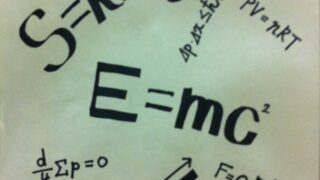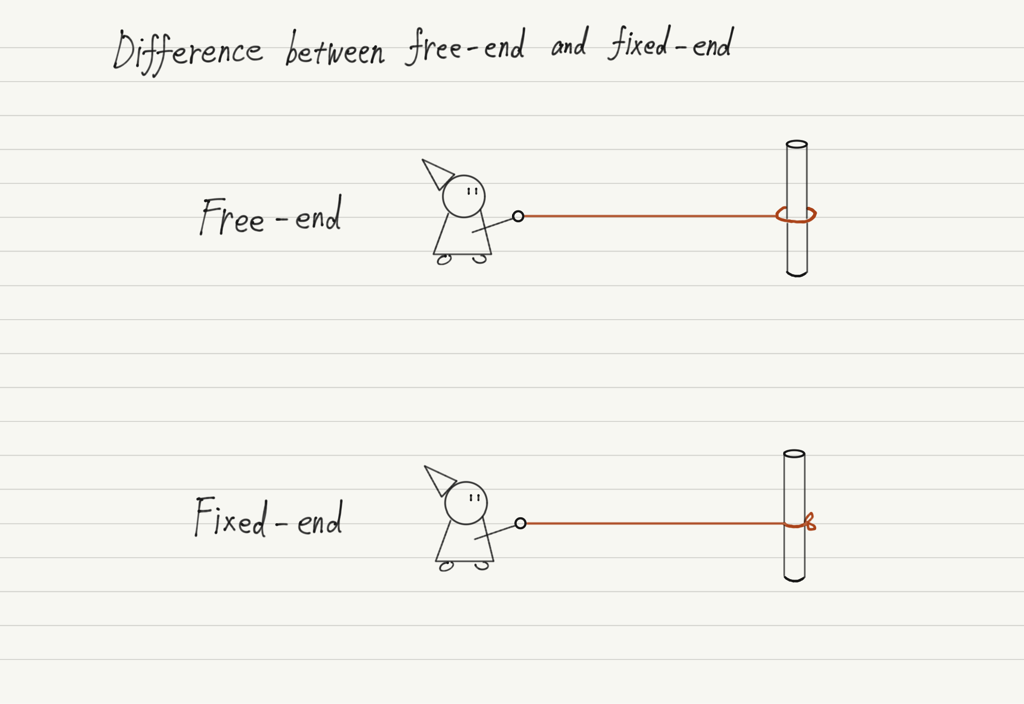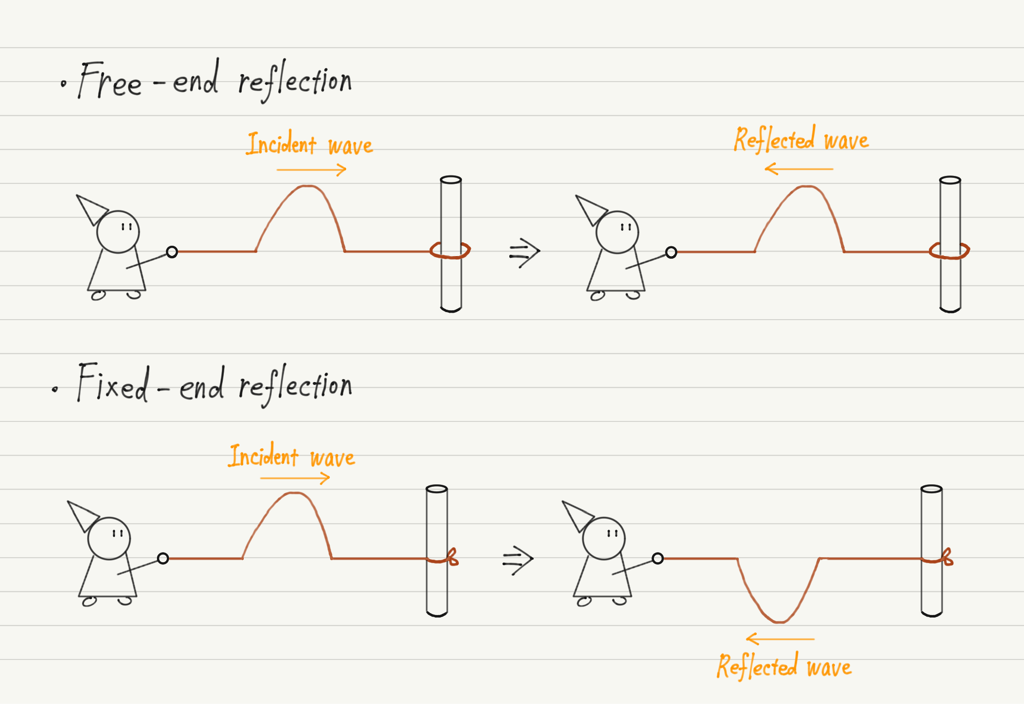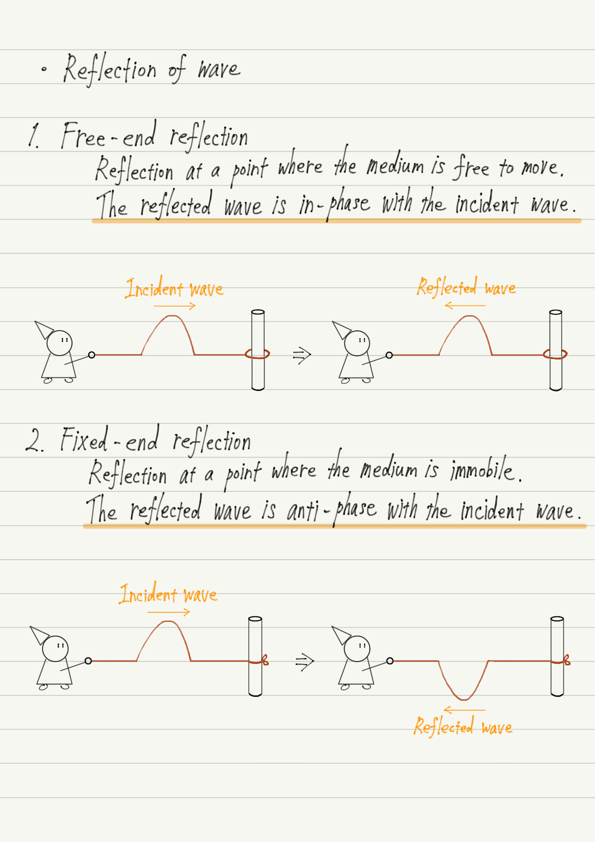Reflection(Free-End and Fixed-End)
This lecture, we will learn about the reflection of waves.
You should have some knowledge of this, such as that the incident angle is equal to the reflection angle, but let’s delve deeper into that!
Classification of reflections
Wave reflections are classified into two types (Free-end and Fixed-end) according to the way they rebound.
The difference between these two reflections is that the medium can move freely or not at the point of reflection.
Let us use the example of a wave traveling along a rope.
What difference does it make whether the rope can move at the reflection point or not?
In fact, the reflected wave looks very different depending on whether the free end or the fixed end is used!
Thus, when a wave crest is incident on the reflector, it will return as a crest at the free end, but at the fixed end it will return as a trough!
The difference between reflections can be expressed in terms of phase as follows.
Free end reflection: The phase of the reflected wave is the same as that of the incident wave.
Fixed-end reflection: The phase of the reflected wave is opposite to that of the incident wave.
If you have forgotten in-phase and anti-phase, review the following links.

Note that the crests and troughs are directly opposite each other, so if you do not check whether the reflected wave is free-end or fixed-end when examining the reflected wave, the result will also be the exact opposite.
Summary of this lecture
It is also important to draw reflected waves.
Please refer to another article for more details.

Next Time
We will be discussing the combination of reflected wave and associated wave, so please make sure you have a good understanding of both.




